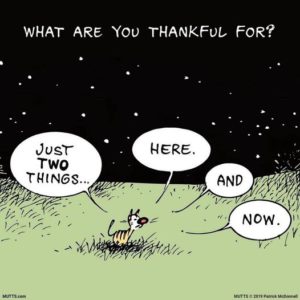I walked into the funeral chapel at 4:00 to visit before the service for a long-time friend, Mary, at 5:00. I saw bright bouquets with heartfelt notes lining walls. I felt the touch of Mary’s son Tim’s hug. The scent of lilies filled the room. I heard the family greet friends, some sniffling, “I’m sorry for your loss.”
When I entered, I heard, saw, felt, smelled. At 4:30, I sat, tired from standing in high heels. The pocket in my basic black dress buzzed with the low vibration of my cell phone. Out of respect, I knew enough to ignore it, but didn’t. To do what I came for, I knew enough to stand and join the mourners, but didn’t. My eyes darted to my phone’s screen: “Hunter.” I could have stayed present to the present moment, but instead bolted to a remote corner to take the call.
Having abandoned my intended presence, I heard Hunter, “Chris called to ask me some questions I couldn’t answer. Here they are…. Can you? ”
My quick mind reacted, “Maybe. I can help RIGHT NOW.”
I knew that our friend Pat could help Chris. My thumbs danced in my instant text, “Chris, Hunter called me about your questions. Call Pat. Pat will have your answers.”
Where was my mind? Just down the hall, the funeral I came to attend felt distant. Mindfulness teachers often call this losing focus and defaulting to automatic pilot “the actions of our inner automaton.”
“I need to act now,” often erupts at the speed of ready-fire-aim.
If I had told my mentors, “I-left-a-funeral-to-take-a-call-then-texted-then-texted-again,” they would offer kindness, “You noticed what lured you away. You spotted a habit. Awareness of patterns is good.”
Yes, true. Yet my automaton roared on, thumbs tapping again, firing off another round to Chris “Chris, I got drawn into your concern. I thought…well, I don’t know what I thought… I should’ve stayed out of it. Sorry.”
What a tangle. For years I’ve taught mindfulness, this training in attention which antidotes auto-piloting. (An ironic truth shows itself here: we teach best what we most need to learn.) Mindfulness steadies the unsteady. Its practices teach us to be less knee-jerky, and more deliberate, to put space between an impulse and an action. Teacher, heal thyself. I could have used that lesson. I could have practiced The Pause, the S….T….O….P….
S: Stop what we’re doing.
T: Turn our attention to the breath or the present moment.
O: Observe what is inside us (thoughts, emotions, body sensations, cravings, impulses), and what is around us here and now.
P: Proceed with what needs doing.
Stop… Pause…. Breathe…Pause…Observe…Pause… Proceed….is the opposite of “bolt-from-where-you-need-to-be-get-a-call-pick-up-the-call-send-a-text-send-another-apologize-for-impulsivity.”
S.T.O.P breaks the trance of unconscious full-speed-ahead.
At 5:00 I paused (phew and finally) and walked into the service to see again the bright bouquets and smell the scent of lilies. I heard Mary’s cousin’s eulogy about Mary’s laughter, her nature hikes, her hours in her garden, her love of Tim, and her cocker spaniel Brooks. We heard how Mary was so “here” while she was here.
If I had paused before dashing off, I could have been at the funeral while I was at the funeral. Awareness of patterns is good, yes. Stopping automatic pilot patterns is also good.
When I tell this story, people say, “Autopilot. I know it well. Me too.”
Remember the 1971 phrase from Harvard professor turned spiritual teacher, Ram Dass? “Be Here Now.” Now is where flowers gift us with their scent, where people hug, where we connect in conversation. Now is where life lives.





Inspirational. Thanks, Sue!
Difficult lesson to learn, but always tryin’. Welcome and gentle reminder to self.
Thank you, teach!